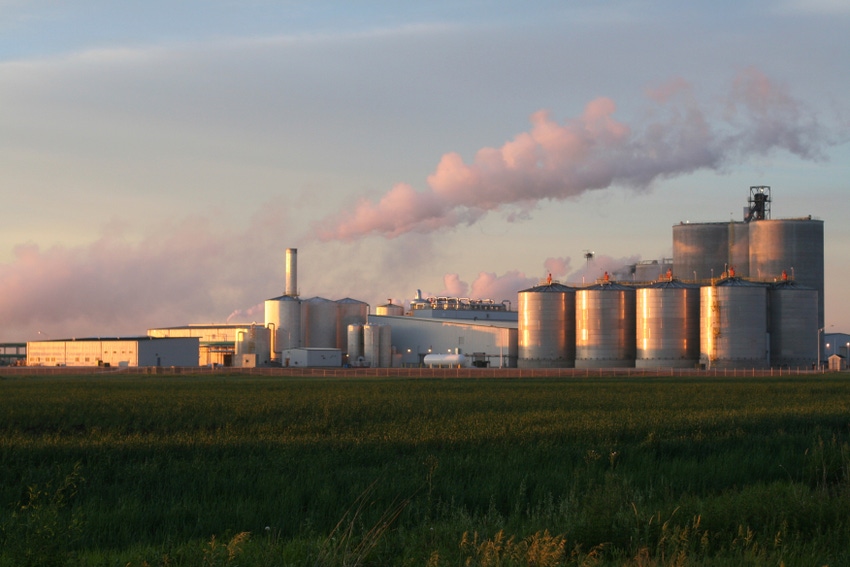Ethanol industry faces many headwinds, and long-term supply/demand fundamentals are concerning.

With the Environmental Protection Agency’s announcement to find a way to allocate lost biofuel demand created by small refinery exemptions in future years and restore the 15 billion-gallon mandate for corn-based ethanol, many had hoped that it would give the industry the lifeline it so desperately needed. However, margins are already stressed, and many headwinds continue for the ethanol sector.
“Many, many ethanol plants are up for sale,” Tanner Ehmke, manager of CoBank’s Knowledge Exchange division, said. As to whether the announcement changes that trajectory, he said it will be a stretch, at this point. He said it's “positive news for sure, but the fundamentals of supply and demand in the ethanol space are concerning long term.”
Much of the recent focus of the corn and ethanol industry was on the Trump Administration’s EPA granting small refinery exemptions (SREs). However, Ehmke noted that margins were stressed long before that, and the SREs only made matters worse. “If you reverse the SREs, there still are supply demands that are concerning,” he said.
Ehmke explained that ethanol exports are still down, facing headwinds because of the trade war with China. “That was our hopeful growth market, and that has not materialized,” he stated, noting that the last shipment of ethanol to China was in March 2018.
The most recent August numbers indicate that U.S. exports to Brazil gained traction after a drop in July, with 17.1 million gallons (up 8%) shipped to the country, however, Ehmke said Brazil has been expanding domestic production. China is set on moving towards E10 fuel blends, yet its goal of reaching that by 2020 is not going to happen.
If China's longer-term view is to increase ethanol in the fuel supply, it will be a huge boost to world ethanol demand. “We don’t know if the Chinese are going to make the ethanol themselves, and they’ll likely have to import some,” Ehmke said.
Will China get this ethanol from the U.S. or Brazil? With the U.S. being the biggest exporter of ethanol, Ehmke said if China wants to increase the amount of ethanol in its fuel supply, they’ll have to come to the U.S. at some point. “You’ve got to resolve the trade war” to capitalize on that long-term hope, Ehmke said. Otherwise, Brazil could build up its corn and ethanol production capacity.
Other major headwinds for the domestic ethanol industry result from the fundamentals in increasing fuel standards, ride sharing and electric vehicles creating declining per capita fuel consumption, Ehmke said. “Those bearish headwinds have not gone away,” he said. In addition, despite the ethanol industry's criticism that the SREs have created the first reduction in ethanol blending in 20 years, some could be attributed to the overall drop in gasoline usage.
Even with the hope of increasing use of higher ethanol blends, Ehmke warned that it doesn’t reverse the negative fundamentals overshadowing the ethanol sector. “If ethanol is affordable, there’s an incentive there to blend more in the fuel supply,” he said.
Some local areas of uncertainty surrounding this year’s fall harvest have added another source of stress for ethanol producers who may not have as abundant of a corn supply, especially in areas that had extremely late-planted corn.
To date, 18 idled ethanol plants, including three that have permanently shut down, are resulting in a loss of 350 million bushels of corn demand and also are eliminating the production of 3 million metric tons of dried distillers grains used by the livestock industry as a high-protein, low-cost replacement for corn and soybean meal.
The 15 billion gallons of ethanol translates into total corn usage of around 5.275 billion bushels -- about 200 million less than the U.S. Department of Agriculture currently forecasts for the 2019 marketing year (15 billion is for the 2020 calendar year) and 100 million less than what was used during 2018 marketing year, using a somewhat conservative conversion rate of 2.85 gallons per bushel, Farm Futures senior grain analyst Bryce Knorr explained.
Today’s nameplate ethanol capacity is at roughly 15 billion gallons. Ehmke added that many plants that had profits didn’t manage those profits where they should have; for instance, they may have expanded when they didn’t need to, he explained.
Many smaller, less efficient ethanol plants are now up for sale. This comes from not having access to rail or barge transportation or from being located in areas with a less reliable corn supply. “Those plants with high costs are at the most risk of not surviving the correction and being up for sale,” Ehmke said. “Some would argue that [there are] a lot of plants that need to close.”
Whether EPA can even implement its plan remains unknown. The oil industry has vowed to "vigorously challenge this new policy in the weeks to come." This fight to help boost the nation's ethanol industry is far from over.
About the Author(s)
You May Also Like



.png?width=300&auto=webp&quality=80&disable=upscale)

